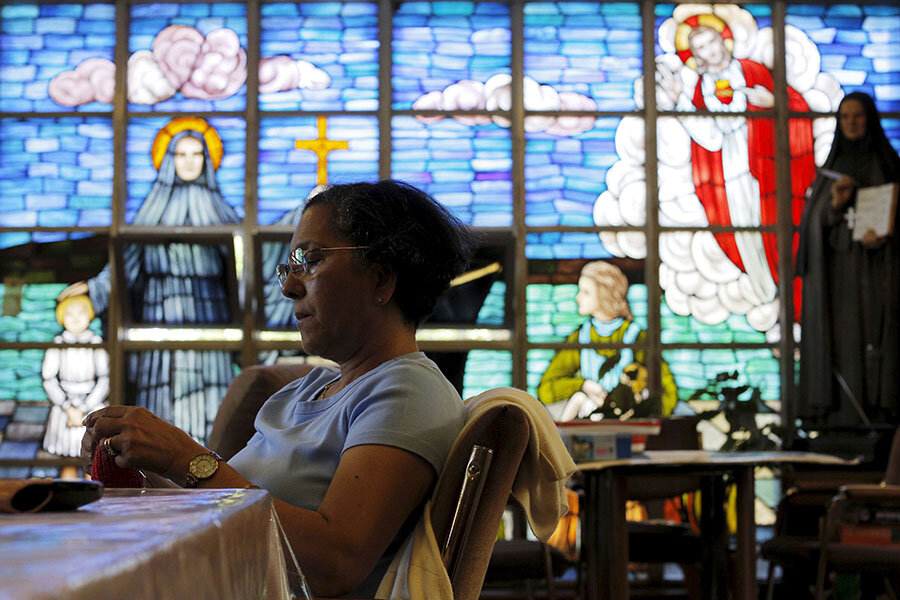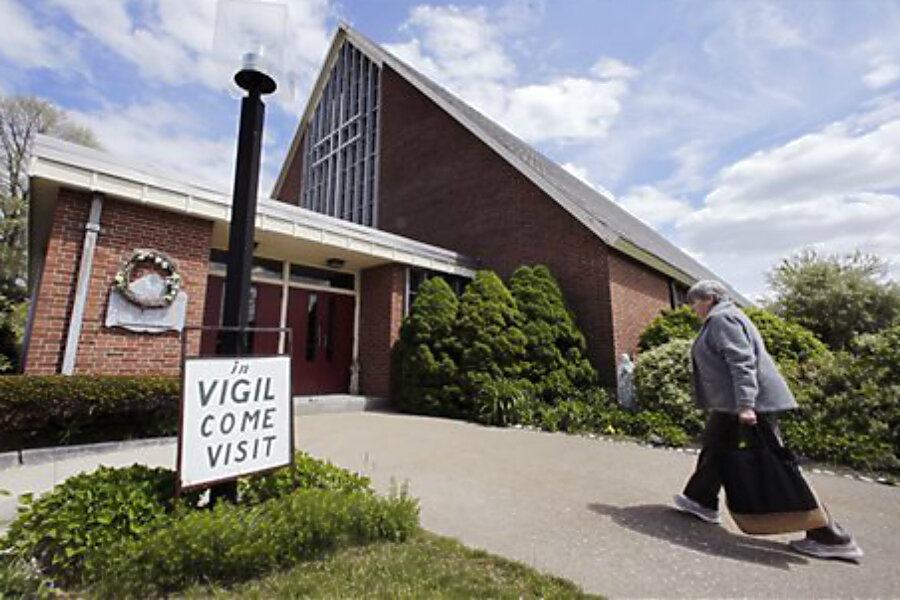Final Boston-area church vigil comes to an end
A nearly 12-year, round-the-clock protest by the parishioners of St. Frances Xavier Cabrini in Scituate, Mass. will come to an end late Monday, when church members will finally leave their church.
On Sunday, about 200 parishioners of the Roman Catholic church in the coastal New England town held their last mass after years of protesting the Archdiocese of Boston over its 2004 decision to close their sanctuary. For more than a decade they took turns keeping a vigil, 24/7, to make sure that at least one person was in the church at all times.
After the United States Supreme Court declined to hear their case this month, however, letting stand the rulings of lower courts that found they were trespassing, parishioners ran out of options to keep the doors open. They agreed to vacate the building by 11:59 p.m. Monday.
"Today is like a death in the family: Sad, yet relieved that the pain is over," a choked-up and teary-eyed Margaret O'Brien told WCVB news on Sunday. The 86-year-old says she raised her family in the church.
But the congregation will go on. For now, the parishioners plan to gather in a Masonic lodge. Ultimately, they hope to raise money for a new building. And when they do, they will form their own church, independent from the Archdiocese of Boston, John Rodgers, a vigil organizer and spokesperson for the parishioners, told Boston's WBZ.
"My vision of the future is to build a place large enough to bring all of our 800 people back that you would see on Christmas and Easter and give them a place to worship," Mr. Rogers told the station. "We had 3,000 registered parishioners before Cardinal Sean O'Malley sued us, and then ultimately will be throwing us into the streets," he said.
Things haven't been the same for the Catholic church in Boston and beyond since the 2002 revelations of widespread sexual abuse scandals rocked Massachusetts and the world. Weekly church attendance in New England today is the lowest in the nation, according to a February Gallup poll. In Massachusetts, 22 percent of residents attend religious services.
Church attendance had been slipping for years, though, a trend that the archdiocese pointed to in its 2004 decision to close the church, along with dozens of other parishes. It also cited the decline in Catholic priests, particularly in the wake of the abuse revelations.
Eight local churches started vigils in protest over their own closures at the time, but St. Frances was the last one standing, with its members fighting for their interpretation of what a church is – its people, say St. Frances parishioners – regardless of whether there is a priest or deacon appointed by the region's bishop to lead it, as the Catholic church requires.
"The way the sex abuse scandal was handled pretty clearly shattered the trust that a lot of people had in the hierarchy," James O'Toole, a professor of history at Boston College, told The New York Times. The vigil likely had been inspired by the writings of the Second Vatican Council in the 1960s, which expanded the role of laypeople in the church, according to Dr. O'Toole.
"It turns out that if you tell the people for 50 years that they are the church, they start to believe it and they start to act on it, and think they have the authority in a way to argue with the hierarchy," he said.
The parishioners in Scituate fought the hierarchy fiercely to keep their sanctuary open, taking their case both to Vatican and American courts.
Last year, the archdiocese ordered the parishioners to leave the building. It sued them when they refused. A Norfolk County Superior Court judge later ruled the parishioners didn't have a right to the church. The ruling was then confirmed by the state Appeals Court, which said that the parishioners were trespassing.
When the US Supreme Court refused to hear the parishioners' case, leaving the lower courts' decisions as the final ruling on the matter, the group had to abandon its steadfast efforts.
"We've always tried to compromise," Rogers told The Boston Herald, speaking of negotiations with the archdiocese. "The value of the land is so much more than the value of the faithful of St. Frances to them," he said.
St. Frances is expected to be demolished. But even that, though painful, won't hamper the community's spirit.
"They can destroy our church, but they can't destroy our faith," Ms. O'Brien told WCVB in Boston.






